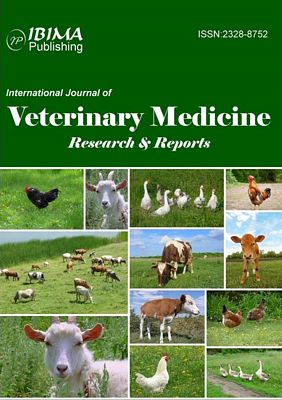Aaerstrup, F. M., Nielsen, E. M., Madsen, M. & Engberg, J. (1997). “Antimicrobial Susceptibility Patterns of Thermophilic Campylobacter Spp. from Humans, Pigs, Cattle and Broilers in Denmark,” Antimicrobial Agents and Chemotherapy, 41 (10) 2244-2250.
Publisher – Google Scholar
Acheson, D. & Allos, B. M. (2001). “Campylobacter Jejuni Infections: Update on Emerging Issues and Trends,” Clinical Infectious Diseases, 32 (8) 1201-1206.
Publisher – Google Scholar
Centers for Disease Control and Prevention, National Center for Emerging and Zoonotic Infectious Diseases (2010). “Campylobacter,” [Online] Available from: http://www.cdc.gov/nczved/divisions/dfbmd/diseases/campylobacter. [Accessed 24th Aug 2013].
Publisher
Central Intelligence Agency (2013). “World Fact Book,” [Online] Available from:https://www.cia.gov/library/publications/the-world-factbook/fields/2147.html. [Accessed 11th Oct 2013].
Publishe
Colles, F. M., Jones, K., Harding, R. M. & Maiden, M. C. J. (2003). “Genetic Diversity of Campylobacter Jejuni Isolates from Farm Animals and the Farm Environment,” Applied and Environmental Microbiology, 69 (12) 7409-7413.
Publisher – Google Scholar
Dingle, K. E., Colles, F. M., Ure, R., Wagenaar, J. A., Duim, B., Bolton, F. J., Fox, A. J., Wareing, D. R. & Maiden, M. C. (2002). “Molecular Characterization of Campylobacter Jejuni Clones: A Basis for Epidemiologic Investigation,”Emerging Infectious Diseases, 8 (9) 949-955.
Publisher – Google Scholar
Dingle, K. E., Colles, F. M., Wareing, D. R., Ure, R., Fox, A. J., Bolton, F. E., Bootsma, H. J., Willems, R. J., Urwin, R. & Maiden, M. C. (2001). “Multilocus Sequence Typing System for Campylobacter Jejuni,” Journal of Clinical Microbiology, 39 (1) 14-23.
Publisher – Google Scholar
Everard, C. O. R. & Everard, J. D. (1988). “Mongoose Rabies,” Review of Infectious Diseases, 10 (Supplement 4) S610-S614.
Publisher – Google Scholar
Ganchingco, J. R. C., Kumar, K., Stone, D., Mathew, V., Stratton, G., Sharma, R. & Hariharan, H. (2012). “Campylobacter Coli and C. Jejuni Isolated from Farmed Pigs in Grenada, West Indies and Their Antimicrobial Resistance Patterns,” Journal of Animal Research, 2 (3) 237-245.
Publisher – Google Scholar
Hariharan, H., Sharma, S., Chikweto, A., Matthew, V. & DeAllie, C. (2009). “Antimicrobial Drug Resistance as Determined by the E-Test in Campylobacter Jejuni, C. Coli, and C. Lari Isolates from the Ceca of Broiler and Layer Chickens in Grenada,” Comparative Immunology, Microbiology and Infectious Diseases, 32 (1) 21-28.
Publisher – Google Scholar
Horst, G. R., Hoagland, D. B. & Kilpatrick, C. W. (2001). The Mongoose in the West Indies: The Biogeography and Population Biology of an Introduced Species, Biography of the West Indies: Patterns and Perspectives, 2 409-424.
Publisher – Google Scholar
Koziel, M., Lucey, B., Bullman, S., Corcoran, G. D. & Sleator, R. (2012). “Molecular-Based Detection of the Gastrointestinal Pathogen Campylobacter Ureolyticus in Unpasteurized Milk Samples from Two Cattle Farms in Ireland,” Gut Pathogens, 4 14.
Publisher – Google Scholar
Miller, S., Amadi, V., Stone, D., Johnson, R., Hariharan, H. & Zieger, U. (2014). ‘Prevalence and Antimicrobial Susceptibility of Salmonella Spp. in Small Indian Mongooses (Herpestes Auropunctatus) in Grenada, West Indies,’Comparative Immunology, Microbiology and Infectious Diseases, submitted Feb 2014.
PubMLST (2013). ‘Campylobacter Multi Locus Sequence Typing Home Page,’ [Online] Available from: http://pubmlst.org/ campylobacter. [Accessed 5th Oct. 2013]
Roopnarine, R., Stone, D., Hariharan, H., DeAllie, C., Hand, C., Hegamin-Younger, C., Mathew, V. & Sharma, R. (2012). “Fluoroquinolone and Metronidazole Resistance of Campylobacter Spp. from Broiler Chickens and Antimicrobial Use on Farms in Grenada, West Indies,” Journal of Animal Research, 2(3) 219-227.
Publisher – Google Scholar
Schouls, L. M., Reulen, S., Duim, B., Wagenaar, A., Willems, R. J. L., Dingle, K. E., Colles, F. M. & Van Embden, J. D. A. (2003). “Comparative Genotyping o Campylobacter Jejuni by Amplified Fragment Length Polymorphism, Multilocus Sequence Typing, and Short Repeat Sequencing: Strain Diversity, Host Range, and Recombination,” Journal of Clinical Microbiology, 41(1) 15-26.
Publisher – Google Scholar
Sheppard, S. K., Dallas, J. F., Strachan, N. J. C., MacRae, M., McCarthy, N. D., Wilson, D. J., Gormley, F. J., Falush, D., Ogden, I. D., Maiden, M. C. J. & Forbes, K. J. (2009). “Campylobacter Genotyping to Determine the Source of Human Infection,” Clinical Infectious Diseases, 48(8) 1072-1078.
Publisher – Google Scholar
Sheppard, S. K., Jolley, K. A. & Maiden, M. C. J. (2012). “A Gene-By-Gene Approach to Bacterial Population Genomics: Whole Genome MLST of Campylobacter,” Genes, 3(2) 261-277.
Publisher – Google Scholar
Stone, D., Davis, M., Baker, K., Besser, T., Roopnarine, R. & Sharma, R. (2013). “MLST Genotypes and Antibiotic Resistance of Campylobacter Spp. Isolated from Poultry in Grenada,” BioMed Research International, 2013 1-10.
Publisher – Google Scholar
Thomas, C., Gibson, H., Hill, D. J. & Mabey, M. (1999). “Campylobacter Epidemiology: An Aquatic Perspective,”Journal of Applied Microbiology, 85 (Suppl.1) 168S-177S.
Publisher – Google Scholar




